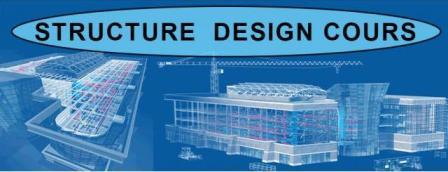Structure Design Engineering

Advance Mechanical and civil design engineering institute make perfect in through concerned with the structural integrity of all sorts of structures from skyscrapers and buildings to bridges and dams. Structural engineers have to calculate load dissipation, stress, strain, and compression to see if a building design is feasible
What you Learn:
Advance Mechanical and civil design engineering institute focus on Structural Engineers create drawings and specifications, perform calculations, review the work of other engineers, write reports and evaluations, and observe construction sites.
"Analyzes and Designs"
The basic tasks of structural engineering relate numerical quantities of physical forces to physical configurations of force-resisting elements. Analysis is the process of determining forces in each element in a structure (such as a beam) when the configuration of elements is already defined. Design is the process of configuring elements to resist forces whose values are already known. Analysis and Design are complementary procedures in the overall process of designing new structures. After performing a preliminary design, the designer estimates the final configuration of elements of a structure, but only until an analysis is performed can the forces in those elements be known. After performing an analysis, the element forces are known, and the elements can be designed (their configuration can be chosen) more precisely. The process iterates between analysis and design until convergence is achieved.
"Gravity Support and Lateral Force Resistance"
Structures are subject to vertical, or "Gravity" Loads and horizontal, or "Lateral" Loads. Gravity loads include "dead", or permanent, load, which is the weight of the structure, including its walls, floors, finishes, and mechanical systems, and "live", or temporary load, which is the weight of a structure's contents and occupants, including the weight of snow. Lateral loads include those generated by the wind, earthquakes, or explosions. Structural elements must be designed so that, as a system, the structure can resist all loads that will act upon it.
"Buildings, Bridges, and Other Structures"
Structures are any system that resists vertical or horizontal loads. Structures include large items such as skyscrapers, bridges, and dams, as well as small items such as bookshelves, chairs, and windows. Most everyday "structures" are "designed" by testing, or trial and error; while large, unique, or expensive structures that are not easily tested are generally designed by a qualified structural engineer using mathematical calculations. Most practicing structural engineers design and analyze buildings, bridges, power plants, electrical towers, dams, and other large structures that are essential to life as we know it.
Job Outlook:
Employment of structural engineers is projected to grow 8 percent from 2014 to 2024, about as fast as the average for all occupations. As infrastructure continues to age, civil engine of structural engineers will be needed to manage projects to rebuild bridges, repair roads, and upgrade levees and dams as well as airports and buildings.
A growing population leading to increasing urbanization means that new water systems will be required while, at the same time, aging, existing water systems must be maintained to reduce or eliminate leaks. In addition, more waste treatment plants will be needed to help clean the nation's waterways.











